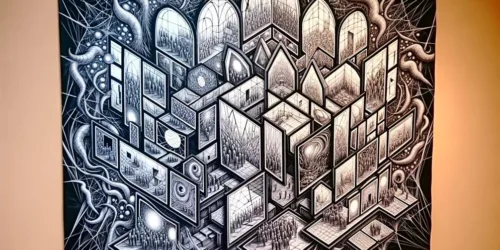Winnie The Pooh Characters Unveiled: Mental Disorders Exposed
Have you ever wondered what lies beneath the surface of the whimsical characters in the Hundred Acre Wood? As you revisit the tales of Winnie the Pooh and his companions, you may find that their peculiar habits and distinctive personalities aren't just for charm; they could mirror actual psychological conditions.
Imagine Pooh's relentless pursuit of honey as more than a simple craving, hinting at an underlying binge eating disorder. Or consider Piglet's perpetual anxiety as a textbook case of a much deeper issue.
Get ready to embark on a thought-provoking exploration of how each character could personify a specific mental health concern. By recognizing these potential disorders, you're set to gain a profound understanding of what these timeless characters could really represent, and how this recognition might influence our perception of mental health in the real world.
Key Takeaways
- The Winnie the Pooh characters exhibit a range of mental disorders, including eating disorders, attention disorders, mood disorders, and obsessive-compulsive disorders.
- Pooh shows signs of binge eating disorder and ADHD, while Rabbit displays symptoms of orthorexia nervosa, ADHD, and OCD.
- Eyeore represents chronic dysthymia, Piglet has generalized anxiety disorder, and Christopher Robin experiences major depressive disorder.
- Other mental disorders depicted include hoarding disorder in Owl, body dysmorphic disorder in Eeyore, and autism spectrum disorder in Roo.
Eating Disorder Allegories
Exploring the allegorical connections between the beloved characters of Winnie the Pooh and various eating disorders provides a unique lens through which to understand these complex conditions. The symbolic portrayals of Pooh's incessant hunt for honey reflect the uncontrolled compulsions seen in binge eating disorder.
Similarly, Rabbit's fixation on maintaining a perfect garden parallels the obsessive qualities of orthorexia nervosa. Tigger's bizarre appetite for non-food items can be seen as a representation of pica, a disorder often misunderstood and overlooked.
These characters, with their distinctive habits, invite you to delve deeper into the underlying messages about human behavior and mental health. Their struggles are sensitively woven into the narrative, offering a compassionate perspective on the challenges faced by those with eating disorders.
Attention Deficit Behaviors
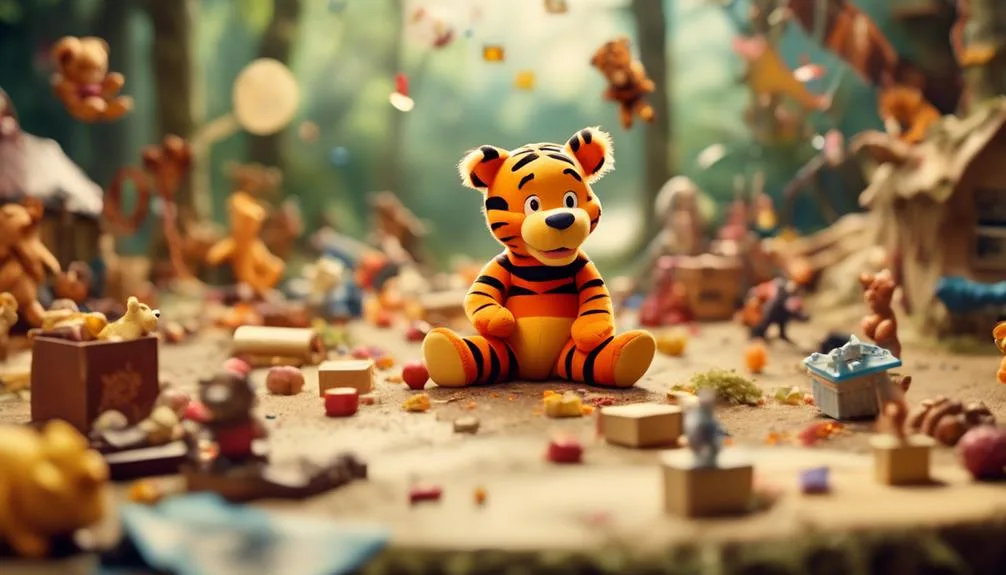
While the eating habits of Winnie the Pooh characters offer a unique window into their psychological world, their attention-related behaviors present another layer of complexity, revealing traits that resonate deeply with those experiencing attention deficit disorders. You're about to delve into the nuances of ADHD in Winnie The Pooh Characters and uncover the cognitive impairments in the Hundred Acre Wood.
| Character | ADHD Traits |
|---|---|
| Pooh | Inattentiveness, Forgetfulness |
| Tigger | Hyperactivity, Impulsivity |
| Piglet | Anxiety, Difficulty Focusing |
| Rabbit | Distractibility, Perseveration |
These characters embody the struggles and behaviors indicative of ADHD, reflecting not only the diversity of the condition but also the sensitivity required in understanding it. Consider how their actions mirror real-life challenges faced by individuals with attention disorders.
Depiction of Mood Disorders
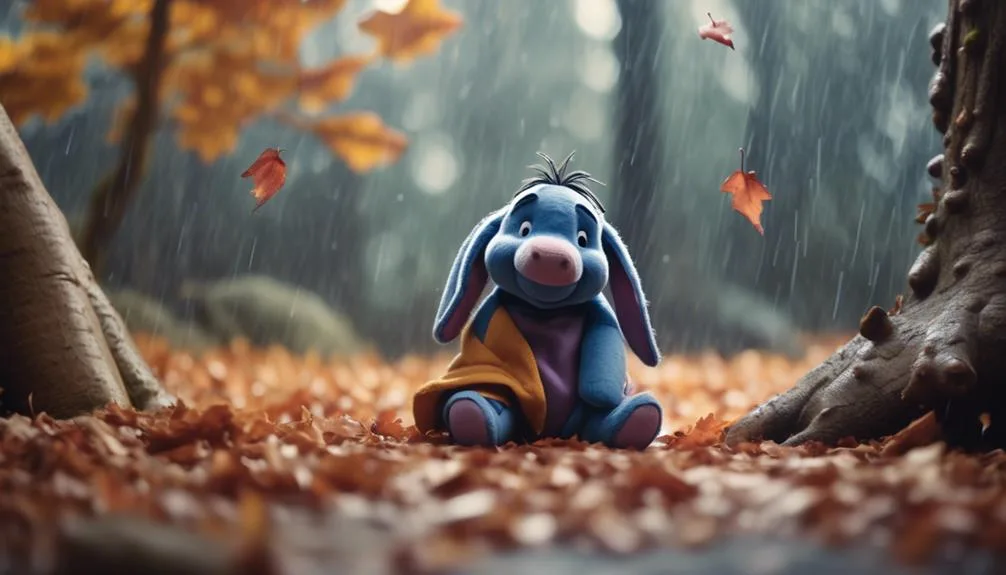
Diving into the emotional depths of the Hundred Acre Wood, you'll notice how the beloved characters poignantly reflect various mood disorders that resonate with real-life emotional struggles.
- Eeyore's chronic dysthymia mirrors depression in childhood, characterized by:
- A pervasive sense of gloom
- An inability to experience joy
- A critical view of the world
- Piglet exemplifies anxiety in fictional characters, revealing:
- Constant worry affecting daily activities
- Physical symptoms like trembling
- An overwhelming sense of fear
- Christopher Robin's major depressive disorder highlights:
- Profound sadness and disinterest
- Withdrawal from social interactions
- Reduced energy levels
You're invited to view these portrayals not just as entertainment, but as a sensitive exploration of complex human emotions, encouraging a deeper empathy and understanding of mood disorders.
Obsessive-Compulsive Representations
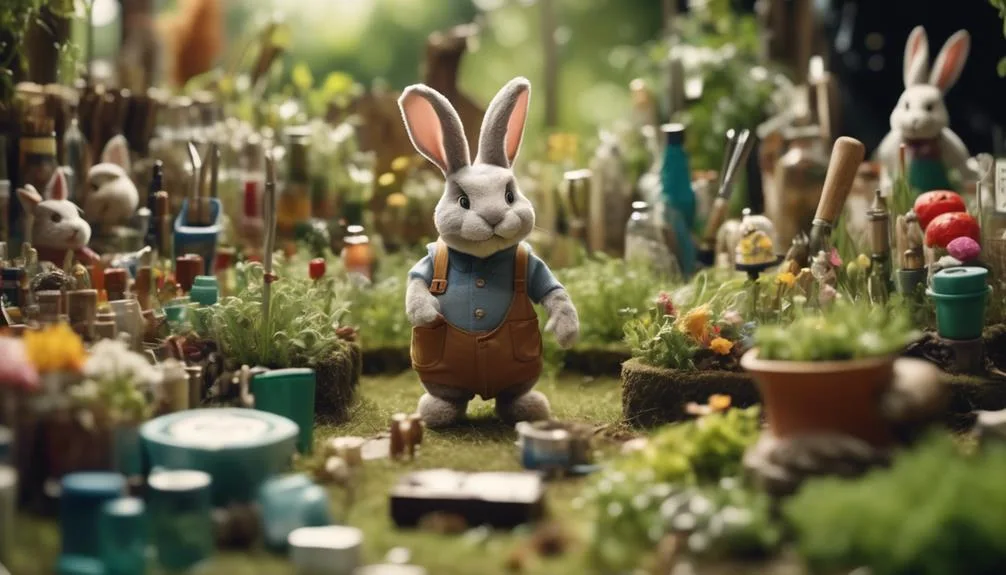
Venturing further into the Hundred Acre Wood, we uncover how Rabbit's meticulous obsession with order and cleanliness manifests as a classic portrayal of Obsessive-Compulsive Disorder (OCD). This character captures the ritualistic behaviors often associated with OCD, adhering to a routine that can be disrupted by the slightest change.
Rabbit's representation, while resonant, runs the risk of reinforcing OCD stereotypes—that those with the condition are solely preoccupied with cleanliness. Yet, the narrative doesn't fully explore the spectrum of OCD experiences, such as the portrayal of body dysmorphic disorder seen in Eeyore's constant focus on his perceived physical flaws.
Your understanding of these characters can be deepened by recognizing that mental disorders are complex, and their portrayals in media should reflect that intricacy.
Unconventional Mindsets

Have you ever considered how the idiosyncratic quirks of Winnie The Pooh characters might reflect unconventional mindsets that challenge societal norms? These beloved characters, often seen as innocent and whimsical, can represent the hidden struggles and mental health stigma that many individuals face.
- Eeyore
- Offers a lens into the reality of chronic depression
- Challenges the stigma by showing that one can be valued and loved despite their struggles
- Tigger
- Embodies the impulsivity and vitality that come with ADHD
- Breaks down barriers by celebrating the energy and creativity of different minds
- Piglet
- Reveals the pervasive nature of anxiety
- Encourages empathy and understanding for those who cope daily with their inner turmoil
Analyzing these characters sensitively opens up a dialogue about mental health in an accessible and meaningful way.
Diverse Psychological Challenges
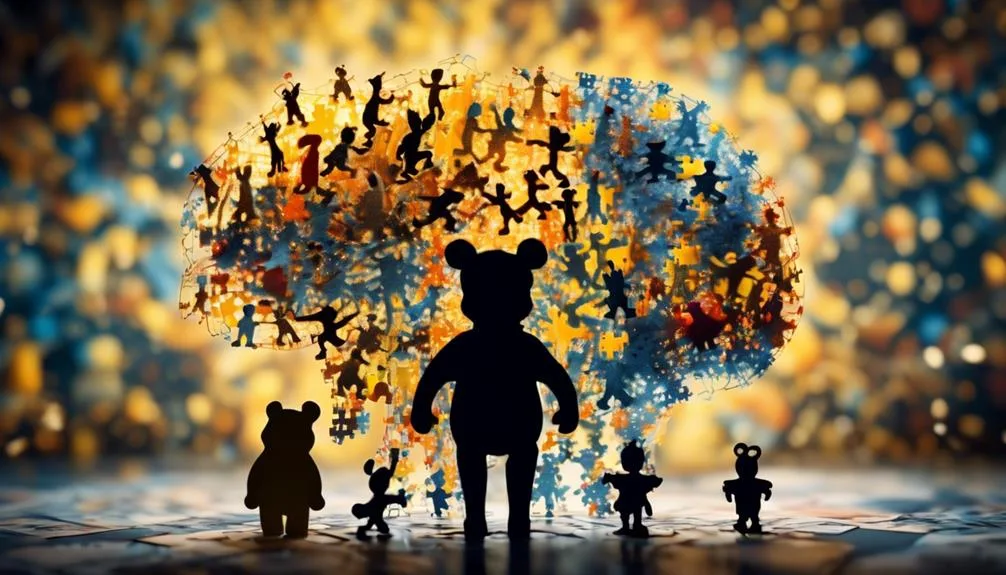
Building on our understanding of the unconventional mindsets portrayed by Winnie The Pooh characters, let's explore the diverse psychological challenges they represent, as these narratives hold a mirror up to the complexities of mental health in our society.
These characters, beloved in children's literature, subtly introduce the idea of mental health diversity, often without the stigma surrounding mental health that's prevalent elsewhere. For example, Eeyore's chronic dysthymia and Piglet's generalized anxiety disorder are portrayed with empathy and normalcy, offering viewers a gentle insight into these conditions.
This representation can foster early awareness and acceptance, potentially shaping a more understanding future generation. Thus, the inhabitants of the Hundred Acre Wood serve not only as entertainment but also as inadvertent educators on the spectrum of mental health.
Frequently Asked Questions
How Do the Characterizations of Mental Disorders in Winnie the Pooh Impact the Perception of These Conditions in Popular Culture?
You'll find that character representation affects cultural impact, shaping how mental disorders are viewed. Insightful portrayals can foster empathy, but stereotypes may perpetuate misconceptions, influencing societal attitudes toward these complex conditions.
To What Extent Have Mental Health Professionals Criticized or Supported the Association of Winnie the Pooh Characters With Various Mental Disorders?
You've asked about professional feedback on character analysis and diagnostic accuracy. Many experts criticize the oversimplification, while others appreciate the conversation it sparks around mental health in a sensitive, insightful manner.
What Are the Ethical Implications of Assigning Mental Disorders to Beloved Children's Characters, and How Might This Influence the Stigma Surrounding Mental Health?
You should know, nearly 1 in 5 U.S. adults live with a mental illness. Assigning disorders to characters could foster empathy, yet risks oversimplifying narrative responsibility and perpetuating stigma. It's a delicate balance.
How Can Parents and Educators Use the Depictions of Mental Disorders in Winnie the Pooh Characters as a Teaching Tool for Children to Understand Mental Health Issues?
You can foster character empathy using storytelling techniques to explain mental health, helping kids grasp complex issues through relatable, fictional scenarios without stigmatizing the conversation.
Are There Any Alternative Interpretations of the Winnie the Pooh Characters That Challenge the Perspective of Them Representing Mental Disorders, and What Do These Interpretations Suggest About the Characters' Behaviors and Traits?
You might consider the characters as archetypes or narrative tools, reflecting broader human traits rather than specific disorders, offering insight into behavior and personality rather than clinical diagnoses.
Conclusion
As you reflect on the Hundred Acre Wood's inhabitants, consider this: about 30% of individuals with a mental disorder don't seek help.
Pooh and friends, in their own whimsical way, shed light on common psychological struggles. Recognizing these traits isn't just about diagnosis; it's about empathy and understanding.
These characters may be fictional, but the issues they parallel are very real. Let's embrace their stories as a gentle nudge towards awareness and compassion in our world.

